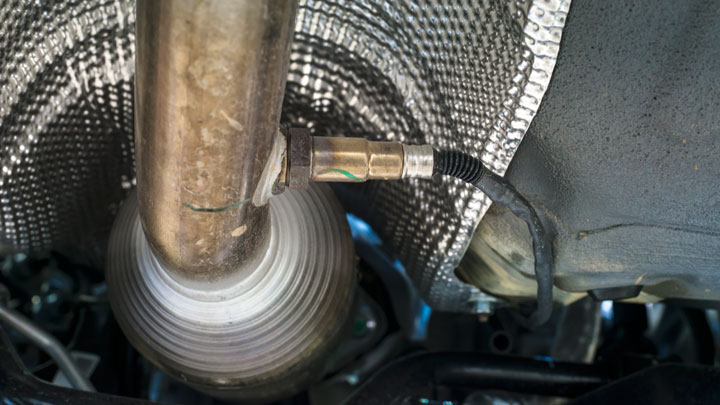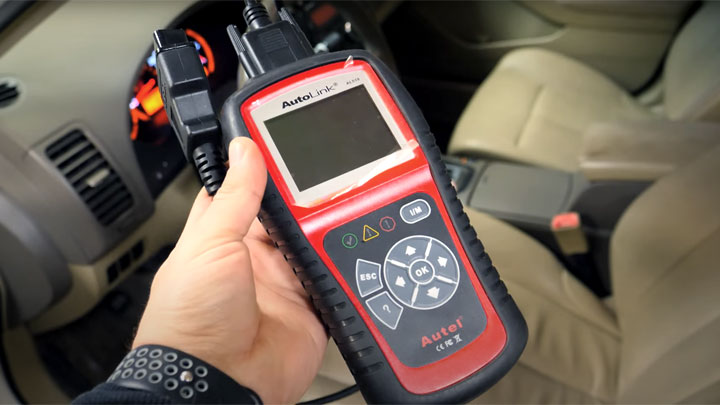P0132 Code (Symptoms, Causes, and How to Fix)
When you’re driving down the road, the last thing you want to see is a check engine light kick on. But for millions of drivers each year, that’s exactly what happens. But once the initial shock wears off and you get the code read, it’s time to figure out what you need to do.
A code P0132 relates to an oxygen sensor voltage issue and might not be the easiest one to figure out and fix. But with this guide, we’ll walk you through everything you need to know to clear that code and get your vehicle back on the road in no time.

What Does Code P0132 Mean?
While an “O2 Sensor Circuit High Voltage” definition might not make sense to you if you don’t have an automotive background, it’s really a pretty straightforward code. It’s essentially telling you that one of the oxygen sensors is returning a signal back to the PCM with too much voltage.
There are a few different things that can cause this, but the code is simply telling you that the PCM is reading too much voltage from a specific oxygen sensor.
See Also: P0130, P0131, P0133, P0134, P0135, P0137, P0138, P0160
Symptoms of Code P0132

While some oxygen sensor codes don’t present many symptoms, that’s usually not the case with a code P0132. Of course, you’ll typically have the check engine light, but other common symptoms include a rough idle or decreased fuel efficiency.
In more severe cases, you might not be able to keep your engine running, and often excessive black smoke is a result. A code P0132 is still an oxygen sensor code at its core though, so sometimes you won’t notice any real symptoms.
Still, that’s pretty rare with a code P0132; you’ll usually see something going on if you’re paying attention.
- Check Engine Light
- Rough Idle
- Decreased Fuel Efficiency
- Failing Engine
- Excessive Black Smoke
- No Noticeable Conditions
Causes of Code P0132

With many codes you can narrow down the problem to one or two potential causes. With a code P0132, that’s simply not the case. Sure, a defective oxygen sensor is the most likely cause, but it’s far from the only potential cause.
There is a litany of potential sensors that could be causing the code, including the air-fuel ratio sensor, mass airflow sensor, or even the coolant temperature sensor.
Of course, the problem could also be with the wiring and connections between the sensor and the PCM or how the PCM interprets the data. Sometimes it’s because the PCM simply needs an update, but in ultra-rare circumstances, you might need to replace the PCM.
A final condition that you need to keep an eye out for if you have a code P0132 is the fuel pressure. If your vehicle has excessively high fuel pressure it can trigger a code P0132, and it’ll likely present even more symptoms.
- Defective Oxygen Sensor
- Defective Air Fuel Ratio Sensor
- Defective Mass Air Flow Sensor
- Defective Engine Coolant Temperature Sensor
- High Fuel Pressure
- Defective Wiring/Circuit
- Outdated PCM Software
- Defective PCM
Is Code P0132 Serious?
Compared to most oxygen sensor codes, a code P0132 is more serious than most. That’s because while a faulty oxygen sensor is the most likely cause of a code P0132, it’s not the only option.
So, sometimes a code P0132 might not signify a serious problem, and other times it can be warning you about a problem that can lead to a lot more damage if you ignore it. Because of this, we highly recommend getting your code P0132 diagnosed and repaired as soon as possible.
Keep in mind that even if you diagnose a code P0132 as a less serious concern, like the oxygen sensor, simply having a check engine light on prevents you from noticing if another, more serious problem pops up. And considering a common symptom of a code P0132 is decreased fuel efficiency, you’re really only costing yourself money the longer you take to fix the problem.
How to Fix

While we’d love to tell you that all you need to do to fix a code P0132 is swap out an oxygen sensor, the truth is that if you don’t do a little more troubleshooting that’s not guaranteed to fix anything. To really get an accurate read with this code you need an automotive scan tool.
When you hook up the scan tool, you need to look at different sensor readings to get a better feel for what’s going on. Check the readings for the oxygen sensor to identify which sensor is giving off the errant reading, then check out the air-fuel ratio sensor, the mass airflow sensor, and the engine coolant temperature sensor.
You should have a pretty decent idea of what those readings should be depending on your vehicle, but if any of them are outside of the acceptable margin, that’s likely the problem. However, before you simply go out and swap out the sensor, double-check the electrical wiring from the sensor to the PCM.
Because even if the sensor is doing everything it should, if it doesn’t have a clean electrical connection to the PCM it won’t read the way it should and it’ll throw an engine code.
Finally, check the fuel pressure for your vehicle. If it’s too high, you’ll need to identify what’s causing this. It could be a blockage somewhere in the system, a damaged fuel line, or a defective fuel injector.
You’ll need to inspect and test each component individually to figure out exactly what is going on. If everything checks out, it could be a problem with your vehicle’s PCM.
It likely just needs an update, and you’ll need to take it to the dealership to get this done. However, in some rare cases you might need to replace the entire PCM. A dealership will still need to program it to your vehicle though, so you might as well take it to them and see what they have to say.
- P0521 Code (Symptoms, Causes, How to Fix) - Mar 22, 2024
- How to PROPERLY Clean 5 Types of Steering Wheel Materials - Feb 19, 2024
- What Should You Do If Your Check Engine Light Comes On? - Nov 6, 2023
